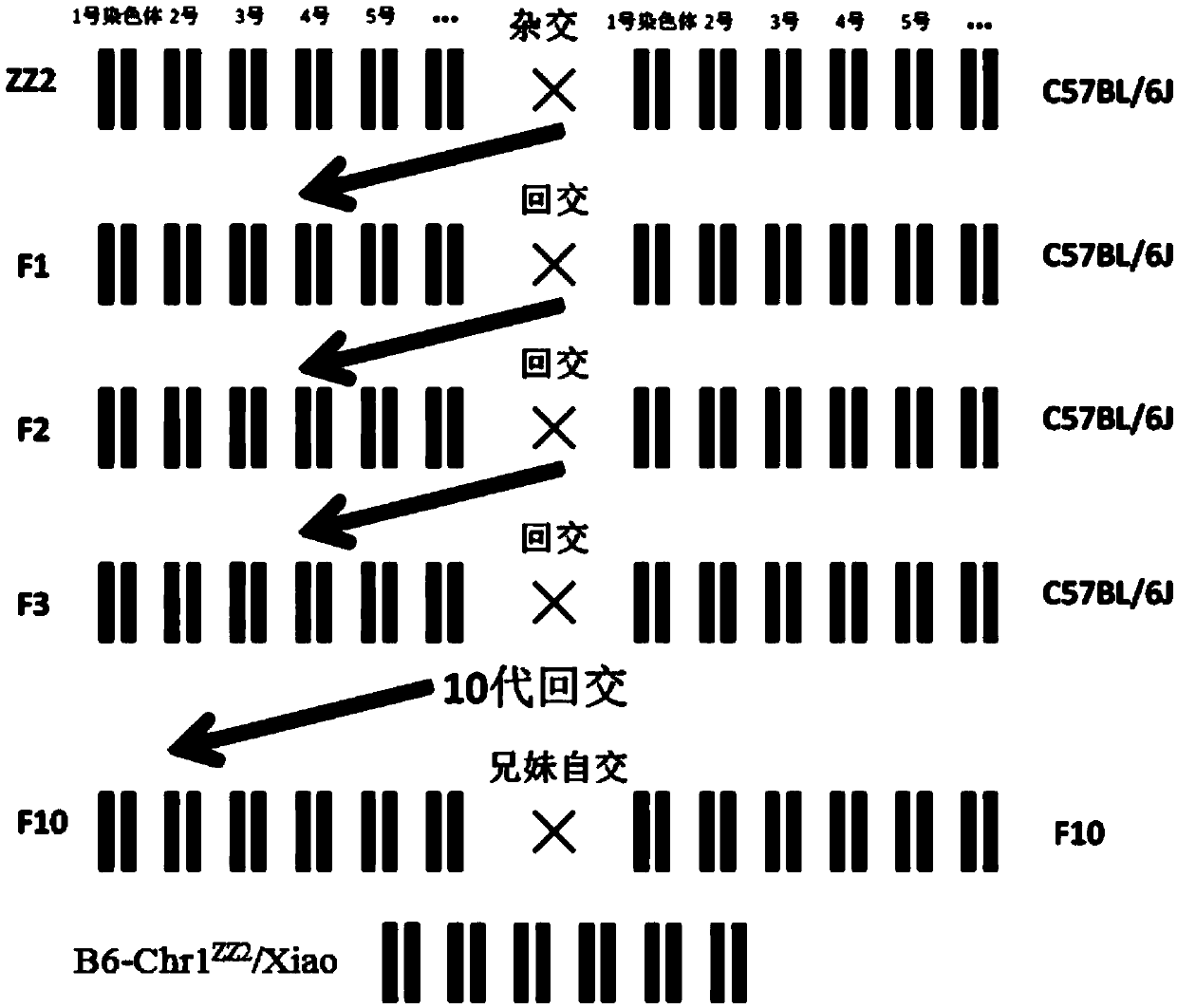Method for constructing B6-Chr1<ZZ2>/Xiao mouse model through replacing No. 1 chromosome based on ZZ2 mus musculus source
A b6-chr1zz2, chromosome replacement technology, applied in the determination/inspection of microorganisms, biochemical equipment and methods, animal husbandry, etc., can solve the problems of too simple, small number of alleles, single source and so on
- Summary
- Abstract
- Description
- Claims
- Application Information
AI Technical Summary
Problems solved by technology
Method used
Image
Examples
Embodiment 1
[0033] 1. Identification of ZZ2 mice
[0034] The ZZ2 mouse genome was sequenced and identified as Mus musculus musculus subspecies.
[0035] 2. Construction of backcross population
[0036] (a) The ZZ2Mus musculus musculus subspecies mouse ZZ2 was crossed with the inbred mouse C57BL / 6J with known genetic background to obtain the F1 generation.
[0037] (b) F1 generation mice were backcrossed with B6 to obtain F2 generation, and the whole chromosome 1 heterozygous mice were screened by genotyping.
[0038] (c) F2 generation mice were backcrossed with B6. After 10 generations of backcrossing and screening by the same method, a population of mice in which chromosome 1 was heterozygous and the rest of the chromosomes were homozygous for the B6 genotype was formed.
[0039] 3. Identification of backcrosses
[0040] From NCBI (National Center for Biotechnology Information), 29 SNP sites covering chromosome 1 were selected on average. The phenotypes of the SNP sites in the two st...
Embodiment 2
[0061] (1) Determination of traits
[0062] Screened pure line B6-Chr1 ZZ2 / Xiao mouse model screens dozens of biological characteristics from multiple perspectives such as external morphology, internal physiology, overall development, blood physiology and biochemistry, and conducts abnormal phenotypes and genes based on existing trait data and genetic background diversity. Type analysis, share various germline resources and biological data, further develop my country's unique experimental animal resources, and provide a breakthrough for the research of corresponding disease genes and prevention methods.
[0063]
[0064]
[0065]
[0066]
[0067]
[0068]
[0069]
[0070]
[0071]
[0072]
[0073]
[0074]
[0075]
[0076]
[0077]
[0078]
[0079]
[0080]
PUM
 Login to View More
Login to View More Abstract
Description
Claims
Application Information
 Login to View More
Login to View More - R&D
- Intellectual Property
- Life Sciences
- Materials
- Tech Scout
- Unparalleled Data Quality
- Higher Quality Content
- 60% Fewer Hallucinations
Browse by: Latest US Patents, China's latest patents, Technical Efficacy Thesaurus, Application Domain, Technology Topic, Popular Technical Reports.
© 2025 PatSnap. All rights reserved.Legal|Privacy policy|Modern Slavery Act Transparency Statement|Sitemap|About US| Contact US: help@patsnap.com



